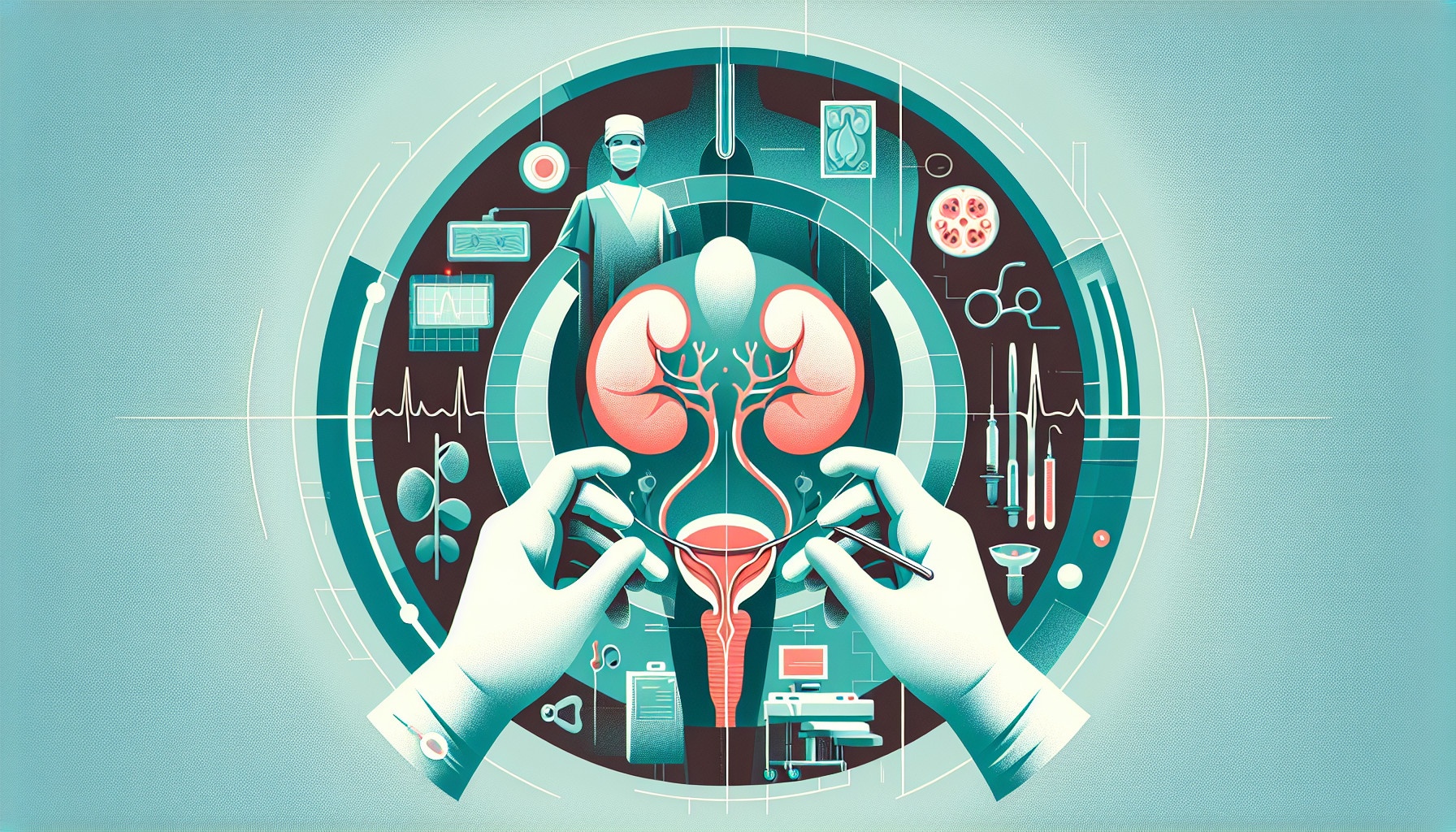Our Summary
This research paper discusses a type of complex surgery known as bladder augmentation. This procedure is mainly performed on a select number of children who have issues with their bladder due to congenital neurological or anatomical abnormalities. These issues can often be managed with specific medication or self-catheterization. However, some patients with spinal abnormalities and children with congenital malformations that lead to a small bladder may require bladder augmentation.
The most common method of bladder augmentation is ileocystoplasty. However, this procedure can have significant short-term and long-term side effects. As a result, recent studies have been exploring new techniques and technologies to reduce these negative effects. One such method involves the use of biomaterials like biological silk grafts, which can potentially encourage the growth of bladder and muscle cells. The results of using these grafts have shown promise, but more research is needed.
FAQs
- What is bladder augmentation and who typically requires this type of surgery?
- What is the most common method of bladder augmentation and what are its potential side effects?
- What are some new techniques and technologies being explored to reduce the negative effects of bladder augmentation?
Doctor’s Tip
One helpful tip a doctor might tell a patient about bladder surgery is to follow post-operative care instructions carefully. This may include taking prescribed medications, following a specific diet, performing pelvic floor exercises, and avoiding certain activities that could put strain on the bladder. It’s important to attend all follow-up appointments with your healthcare provider to monitor your progress and address any concerns. Additionally, staying hydrated and maintaining a healthy lifestyle can help support recovery and improve bladder function.
Suitable For
Patients who are considered for bladder surgery typically have tried other conservative treatments without success and have persistent symptoms such as urinary incontinence, urinary retention, frequent urinary tract infections, or bladder pain. Patients with conditions such as bladder cancer, interstitial cystitis, neurogenic bladder, or bladder dysfunction due to radiation therapy may also be candidates for bladder surgery.
In addition, patients who have experienced trauma to the bladder or have a history of recurrent bladder stones may also require surgical intervention. It is important for patients to undergo a thorough evaluation by a urologist or other healthcare provider specializing in bladder disorders to determine if surgery is the best course of action for their specific condition.
Overall, bladder surgery is typically recommended for patients who have not responded well to other treatments and have ongoing bladder dysfunction that significantly impacts their quality of life. It is important for patients to discuss the risks and benefits of surgery with their healthcare provider to make an informed decision about their treatment options.
Timeline
Before bladder surgery:
- Patient consults with a urologist or pediatric urologist to discuss the need for bladder augmentation.
- Patient undergoes various tests and evaluations to determine the best course of treatment.
- Patient may undergo pre-operative preparations, such as fasting and bowel preparation.
- Surgery is scheduled and patient receives instructions on what to expect before and after the procedure.
After bladder surgery:
- Patient wakes up in recovery room and is monitored closely by medical staff.
- Patient may experience pain and discomfort, which is managed with pain medication.
- Patient is monitored for any potential complications, such as infection or bleeding.
- Patient may have a catheter in place to drain urine from the bladder.
- Patient begins the recovery process, which may include physical therapy and follow-up appointments with the urologist.
- Long-term follow-up is necessary to monitor for any potential complications or issues with bladder function.
Overall, the timeline of a patient’s experience before and after bladder surgery can vary depending on the specific circumstances of the surgery and the individual patient. It is important for patients to follow their healthcare provider’s instructions closely and communicate any concerns or issues that may arise during the recovery process.
What to Ask Your Doctor
What are the potential risks and complications associated with bladder augmentation surgery?
How long is the recovery process after bladder augmentation surgery?
Will I need to make any lifestyle changes or modifications after the surgery?
What are the expected outcomes of bladder augmentation surgery in terms of bladder function and quality of life?
Are there any alternative treatments or procedures that could be considered instead of bladder augmentation surgery?
How often will I need to follow up with my doctor after the surgery?
What is the success rate of bladder augmentation surgery in patients with similar conditions to mine?
Are there any specific dietary or exercise recommendations I should follow post-surgery?
How long do the effects of bladder augmentation surgery typically last?
What can I expect in terms of pain management and discomfort after the surgery?
Reference
Authors: Langer S, Radtke C, Györi E, Springer A, Metzelder ML. Journal: Wien Med Wochenschr. 2019 Mar;169(3-4):61-70. doi: 10.1007/s10354-018-0645-z. Epub 2018 Aug 6. PMID: 30084093
